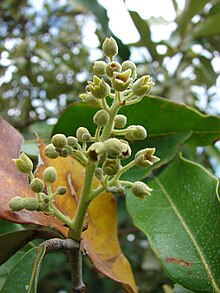The Catalogue of Life is an online database that provides an index of known species of animals, plants, fungi, and microorganisms. It was created in 2001 as a partnership between the global Species 2000 and the American Integrated Taxonomic Information System. The Catalogue is used by research scientists, citizen scientists, educators, and policy makers. The Catalogue is also used by the Biodiversity Heritage Library, the Barcode of Life Data System, Encyclopedia of Life, and the Global Biodiversity Information Facility. The Catalogue currently compiles data from 165 peer-reviewed taxonomic databases that are maintained by specialist institutions around the world. As of September 2022, the COL Checklist lists 2,067,951 of the world's 2.2m extant species known to taxonomists on the planet at present time.

Heritiera littoralis, commonly known as the looking-glass mangrove or tulip mangrove, is a mangrove tree in the family Malvaceae native to coastal areas of eastern Africa, Asia, Melanesia and northern Australia. The common name refers to the silvery appearance of the underside of the leaves, resembling a mirror to some degree. The strong timber has uses in marine applications and elsewhere.

Capparis zeylanica is a climbing shrub common in the forests of the Indian subcontinent, Indo-China, China and Malesia; no subspecies are listed in the Catalogue of Life. Several species of Lepidopteran larvae feed on its leaves.

Drosera tentaculata is a carnivorous plant native to Brazil. The species is endemic to the Brazil and occurs in "rupestre" field at the "Cadeia do Espinhaço" Highlands in the Bahia and Minas Gerais.
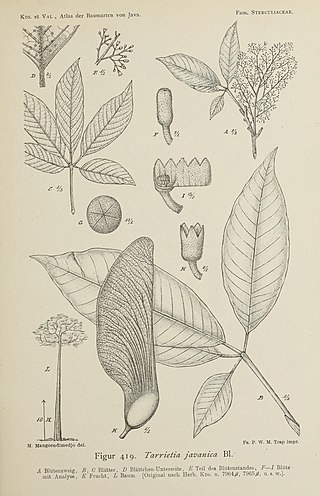
Heritiera javanica is a species of tree in the family Malvaceae, subfamily Sterculioideae.
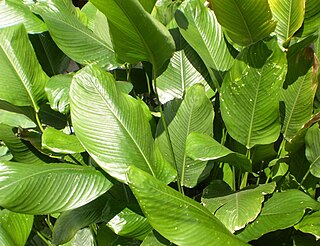
Stachyphrynium placentarium is a species of plant in the family Marantaceae. Its basionym was Phyllodes placentaria Lour. and was subsequently long placed as various species in the genus Phrynium. The species is widespread throughout Asia, with records from Bhutan, southern China, India, Indo-China and Indonesia; no subspecies are listed in the Catalogue of Life.
Metarhizium rileyi is a species of entomopathogenic fungus in the family Clavicipitaceae; there is extensive literature under its synonym Nomuraea rileyi.
Ficus costata is an Asian species of fig tree in the family Moraceae. No subspecies are listed in the Catalogue of Life its native range is SW. India, Sri Lanka, Indo-China. The species can be found in Vietnam: where it may be called sung sóng.

Ficus kurzii may be called the Burmese banyan: it is an Asian species of fig tree in the family Moraceae. No subspecies are listed in the Catalogue of Life; its native range is China (Yunnan) Indo-China and Malesia. The species can be found in Vietnam: where it may be called Ða Kurz.

Ficus fistulosa is an Asian species of fig tree in the family Moraceae. No subspecies are listed in the Catalogue of Life; its native range is Assam to Taiwan, Indo-China, Malesia and New Guinea. The species can be found in Vietnam: where it may be called sung giòn. It is dioecious, with male and female flowers produced on separate individuals.
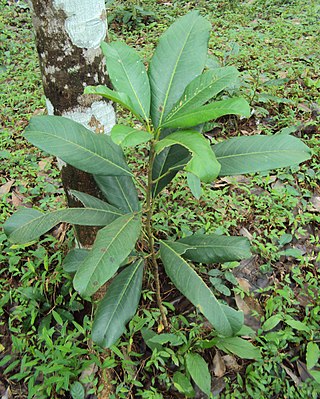
Ficus callosa is an Asian species of fig tree in the family Moraceae. No subspecies are listed in the Catalogue of Life; the native range of this species is India, southern China, Indo-China and Malesia. The species can be found in Vietnam: where it may be called đa chai or đa gùa.
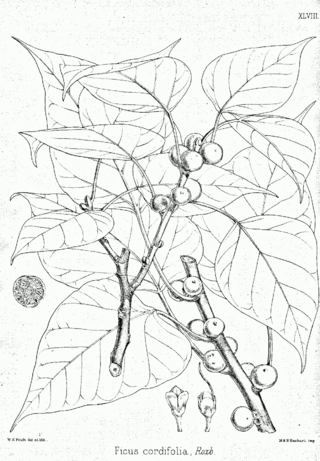
Ficus rumphii is a banyan fig species in the family Moraceae. No subspecies are listed in the Catalogue of Life. The species can be found in: India, southern China, Indo-China and Malesia. In Vietnam it may be called lâm vồ or đa mít.

Ficus depressa is a banyan fig species in the family Moraceae. No subspecies are listed in the Catalogue of Life. The species can be found in Indo-China and Malesia. In Vietnam it may be called sung xoài or đa nước.
Ficus pisocarpa is a banyan fig species in the family Moraceae. No subspecies are listed in the Catalogue of Life. The species can be found in southern China, Indo-China and western Malesia including the Philippines. In Vietnam, it may be called đa đậu.

Ficus subcordata is a banyan fig species in the family Moraceae. No subspecies are listed in the Catalogue of Life. The species can be found in Indo-china, Malesia and New Guinea. In Vietnam it may be called sung mù u.

Ficus heterophylla is a fig plant species, in the family Moraceae, which can be found in India, southern China, Indo-China and western Malesia. In Vietnam it may be called vú bò.
Ficus hederacea is a climbing fig species, in the family Moraceae, which can be found in the Himalayas, southern China and Indo-China. In Vietnam it may be called sung leo. No subspecies are listed in the Catalogue of Life.

Ficus sagittata is a trailing fig species, in the family Moraceae, which can be found in southern China, Indo-China and Malesia. In Vietnam it may be called sung dầu tên or sung bò. No subspecies are listed in the Catalogue of Life.
Ficus capillipes is an Asian species of fig tree in the family Moraceae. No subspecies are listed in the Catalogue of Life; the native range of this species is Indo-China and Sumatra. The species can be found in Vietnam: where it may be called ''đa cuống mãnh.

Dracaena angustifolia is a species of Asian tropical forest under-storey plants in the family Asparagaceae; no subspecies are listed in the Catalogue of Life.
